현대 조명 프로젝트에서 유연성은 밝기나 효율성만큼 중요해졌습니다. 설계자, 엔지니어 및 계약자는 더 이상 단순한 온/오프 제어에 만족하지 않습니다. 다양한 분위기, 기능 및 에너지 목표에 적응하는 조명이 필요합니다. 이것은 디밍 가능한 LED 스트립 조명이 중요한 역할을 하는 곳입니다. 그러나 기본 아날로그 옵션에서 고급 디지털 시스템에 이르기까지 여러 디밍 프로토콜을 사용할 수 있으므로 올바른 솔루션을 선택하는 것은 혼란스러울 수 있습니다. 이 기사에서는 최고의 디밍 가능 LED 스트립 조명 옵션을 살펴보고 그 강점과 약점을 비교하고 프로젝트에 가장 적합한 조광 방법을 선택하는 방법에 대한 실용적인 지침을 제공합니다.
LED 스트립 조명에서 디밍이 중요한 이유
조명은 더 이상 보기에 충분한 밝기를 제공하는 것이 아닙니다. 상업 및 주거 프로젝트 모두에서 편안함을 만들고 에너지를 절약하며 다양한 작업에 적응할 것으로 예상됩니다. 디밍이 가능한 LED 스트립 조명은 디자이너와 건물 소유주에게 획일적인 접근 방식에 만족하기보다는 조명을 미세 조정할 수 있는 기능을 제공합니다.
에너지 관점에서 디밍은 전력 소비를 직접적으로 줄입니다. 조명을 50% 출력으로 낮추면 에너지 사용량이 일반적으로 비슷한 양만큼 감소하여 공과금을 낮추고 환경 발자국을 줄입니다. 넓은 공간을 관리하는 기업의 경우 이러한 효율성이 상당한 장기적 절감 효과를 제공할 수 있습니다.
편안함과 분위기는 또 다른 주요 원인입니다. 소매점은 피크 시간에 제품을 강조하기 위해 더 밝은 빛을 원할 수 있으며 호텔 라운지는 저녁에는 더 따뜻하고 부드러운 빛을 선호할 수 있습니다. 조광기 스트립을 사용하면 하나의 시스템이 고정 장치를 변경하지 않고 두 가지 요구 사항을 모두 충족할 수 있습니다.
내구성 문제도 있다. 감소된 전력으로 LED를 실행하면 열이 적게 발생하여 스트립과 전원 공급 장치의 수명을 연장할 수 있습니다. 시설 관리자의 경우 이는 교체 횟수가 적고 유지 관리 비용이 절감된다는 것을 의미합니다.
마지막으로 디밍을 통해 스마트 제어 시스템과의 통합이 가능합니다. 사무실은 일광을 기반으로 조명 수준을 자동화할 수 있으며 엔터테인먼트 장소는 스트립을 음악 또는 무대 효과와 동기화할 수 있습니다. 이 수준의 제어는 현대적인 조명 디자인에서 표준이 되었으며 디밍 가능 LED 스트립은 유연하고 컴팩트한 형식으로 액세스할 수 있습니다.
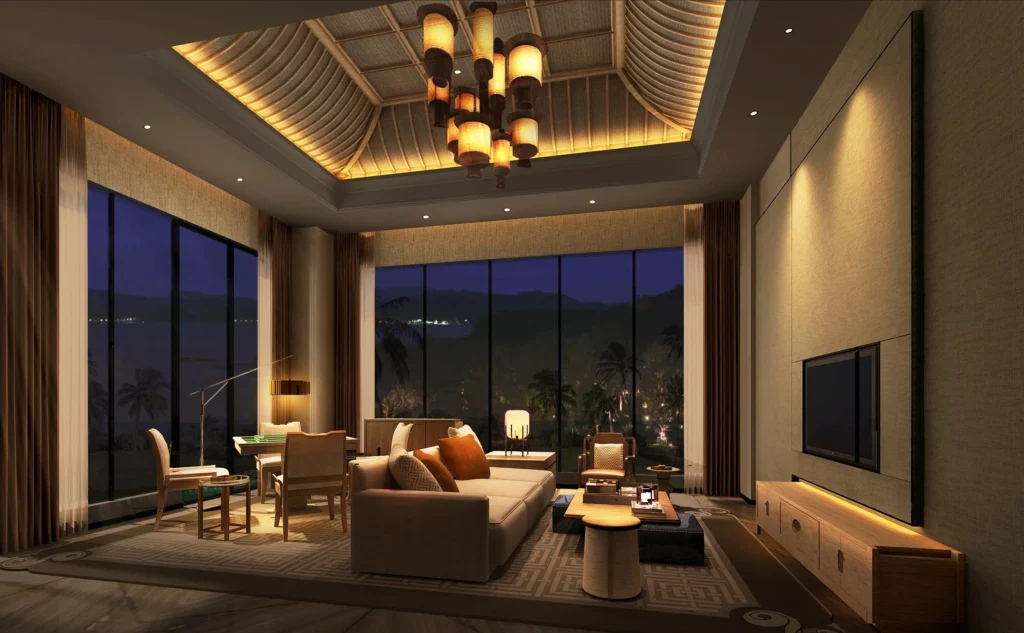
LED 스트립 디밍 방법 요약
조광 가능한 LED 스트립 조명에 관해서는 단일 "보편적인" 솔루션이 없습니다. 간단한 주택 개조에서 대규모 상업 프로젝트 및 엔터테인먼트 장소에 이르기까지 다양한 응용 분야의 요구 사항을 충족하기 위해 다양한 디밍 프로토콜이 개발되었습니다. 각 방법에는 고유한 장점, 한계 및 기술 요구 사항이 있습니다.
각 시스템의 작동 방식에 대한 세부 정보를 살펴보기 전에 한 걸음 물러서서 더 큰 그림을 보는 것이 유용합니다. 아래 표는 PWM, Triac, 0-10V, Dali 및 DMX와 같은 가장 일반적인 디밍 옵션을 나란히 비교하여 정의, 강점, 단점 및 일반적인 응용 분야에서 어떻게 다른지 빠르게 확인할 수 있습니다.
| 디밍 방법 | 정의 | 장점 | 단점 | 일반적인 애플리케이션 |
| PWM(펄스 폭 변조) | LED를 빠르게 켜고 끄고 듀티 사이클을 변경하여 밝기를 조정합니다. | 넓은 디밍 범위, 비용 효율적, 구현이 간단합니다. | 설계가 잘못되면 플리커가 발생할 수 있으며, 대규모 네트워크에는 제한이 있습니다. | 주거, 소매, 일반 조명. |
| 트라이액(위상 컷 디밍) | AC 위상 컷 기술을 사용하며 호환되는 LED 드라이버가 필요합니다. | 전통적인 벽 조광기로 작동하고 쉽게 개조합니다. | 호환성 문제, 덜 정확하고 깜박임 위험. | 가정 업그레이드, 소규모 프로젝트. |
| 0-10V 디밍 | 밝기를 조절하기 위해 0–10V 신호를 사용하는 아날로그 제어. | 신뢰할 수 있고 상업적 환경에서 널리 채택됩니다. | 추가 제어 배선이 필요하며, 제한된 고급 기능. | 사무실, 학교, 병원, 공장. |
| DALI(디지털 주소 지정 가능한 조명 인터페이스) | 양방향 통신 및 주소 지정 기능이 있는 디지털 프로토콜. | 스마트하고 유연하며 그룹화 및 개별 제어가 가능합니다. | 비용이 높을수록 시운전이 필요합니다. | 호텔, 고급 사무실, 스마트 빌딩. |
| DMX(디지털 멀티플렉스) | 무대 조명을 위해 설계된 디지털 프로토콜은 RGB 효과를 지원합니다. | 색상 변경 LED 스트립에 이상적인 고정밀. | 복잡한 배선은 숙련된 설정이 필요합니다. | 극장, 클럽, 엔터테인먼트, 외관 조명. |
이 개요를 염두에 두고 이제 각 디밍 방법을 자세히 살펴보고 실제로 작동하는 방식, 고유한 요소가 무엇인지, 실제 프로젝트에서 가장 적합한 위치를 탐색할 수 있습니다.
PWM 디밍(펄스 폭 변조)
정의
PWM 또는 펄스 폭 변조는 LED 스트립 조명의 밝기를 제어하는 가장 일반적인 방법 중 하나입니다. PWM은 LED에 대한 전압을 낮추는 대신 매우 높은 주파수에서 조명을 빠르게 켜고 끕니다. 온타임과 오프 타임의 비율(듀티 사이클이라고 함)을 변경하면 평균 광 출력이 사람의 눈에 더 밝거나 어둡게 나타납니다.
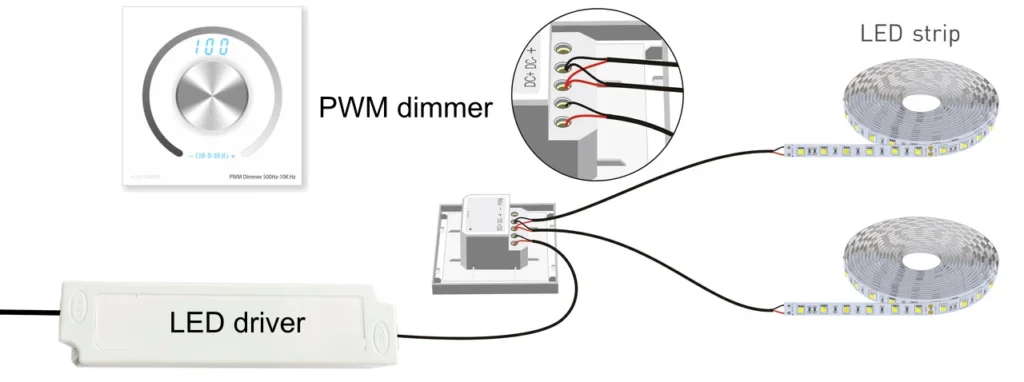
특징
PWM의 주요 특징 중 하나는 넓은 디밍 범위입니다. LED는 상당한 색상 변화 없이 전체 밝기에서 매우 낮은 수준까지 부드럽게 조정할 수 있으므로 많은 프로젝트에서 다용도로 사용할 수 있습니다.
또 다른 기능은 호환성입니다. PWM 디밍은 간단한 휴대용 리모컨에서 고급 스마트 홈 시스템에 이르기까지 다양한 LED 드라이버와 컨트롤러로 지원됩니다. 이것은 주거용 사용자와 소규모 상업용 설치 모두에게 쉬운 진입점이 됩니다.
비용 효율성도 중요한 특징입니다. 고급 디지털 프로토콜과 비교하여 PWM 디밍 시스템은 상대적으로 저렴하고 덜 전문화된 장비를 필요로 합니다.
장단점
PWM의 주요 장점은 유연성입니다. 다양한 밝기 수준에서 일관된 광 품질을 제공하며 단색, 조정 가능한 흰색 및 RGB LED 스트립에 사용할 수 있습니다. 비용이 저렴하기 때문에 예산이 빠듯한 프로젝트에 실용적인 선택이 될 수도 있습니다.
단점은 잘못 설계된 PWM 시스템이 특히 매우 낮은 디밍 레벨에서 또는 카메라로 기록될 때 눈에 보이는 깜박임을 유발할 수 있습니다. 고주파 PWM은 이 효과를 줄일 수 있지만 드라이버와 제어 시스템의 신중한 설계가 필요합니다. PWM은 아날로그 또는 디지털 통신 프로토콜이 더 많은 안정성을 제공하는 대규모 네트워크에 적합하지 않습니다.
애플리케이션
PWM 디밍은 캐비닛 아래 스트립, 액센트 조명 또는 장식 설치와 같은 주거용 조명에 널리 사용됩니다. 소매 환경에서는 하루 중 다양한 시간에 제품을 강조 표시하기 위해 유연한 밝기 조정을 제공할 수 있습니다. 카페나 부티크 상점과 같은 소규모 상업 프로젝트도 경제성과 사용 편의성의 이점을 누릴 수 있습니다.

TRIAC 디밍
정의
위상 컷 디밍이라고도 하는 트라이악 디밍은 백열등과 할로겐 램프를 위해 설계된 방법입니다. 광원에 도달하기 전에 AC 파형의 일부를 절단하여 작동하여 전달되는 전력량을 효과적으로 줄입니다. LED 스트립 조명에 적용할 때 이 신호를 LED에 대한 안정적인 DC 전원으로 변환하려면 호환되는 AC/DC 드라이버가 필요합니다.
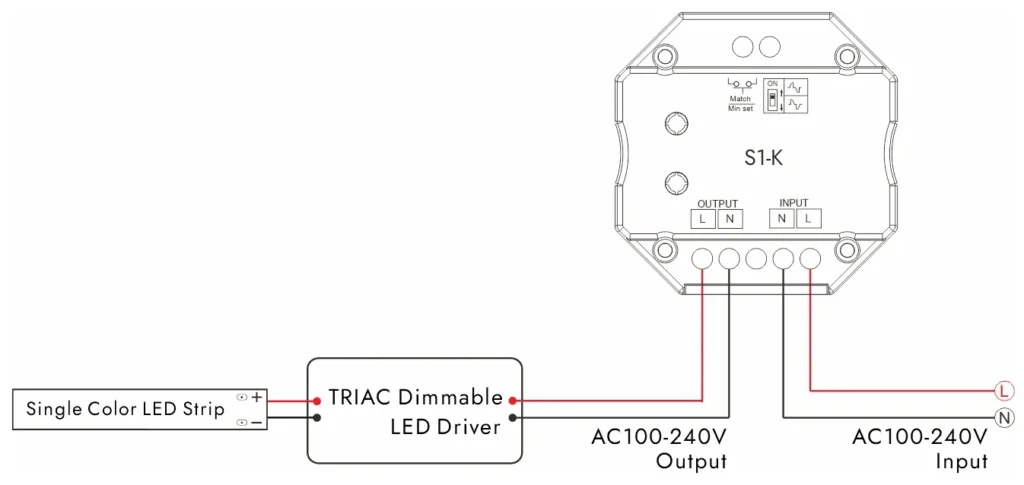
특징
TRIAC 디밍의 가장 주목할만한 특징은 기존 벽 조광기와의 호환성입니다. 따라서 기존 배선과 스위치가 이미 설치되어 있는 개조 프로젝트에 매력적인 솔루션이 됩니다. 사용자는 LED 기술로 업그레이드하는 동안 종종 오래된 조광기 스위치를 유지할 수 있습니다.
또 다른 중요한 기능은 단순성입니다. AC 입력과 직접 작동하므로 TRIAC 디밍은 추가 제어 배선이 필요하지 않습니다. 간단한 업그레이드를 원하는 주택 소유자 또는 설치자의 경우 설치하는 동안 시간과 비용을 모두 절약할 수 있습니다.
마지막으로 Triac 디밍이 널리 사용됩니다. 조명 산업에서 수십 년 동안 사용되어 왔기 때문에 트라이액 호환 드라이버와 조광기는 대부분의 시장에서 쉽게 소싱할 수 있습니다.
장단점
TRIAC 디밍의 주요 장점은 편리함입니다. 시스템을 완전히 다시 배선할 필요 없이 구형 조명 기술에서 LED로 원활하게 전환할 수 있습니다. 또한 디지털 제어 프로토콜에 비해 상대적으로 저렴합니다.
반면에 Triac 디밍은 호환성 문제를 일으킬 수 있습니다. 모든 LED 드라이버가 위상 차단 신호에 잘 반응하는 것은 아니므로 깜박임, 디밍 범위 제한 또는 윙윙거리는 소음이 발생할 수 있습니다. 정밀도는 DALI 또는 0-10V와 같은 프로토콜보다 낮기 때문에 정밀한 제어가 필요한 프로젝트에는 적합하지 않습니다.
애플리케이션
TRIAC 디밍은 주거용 조명, 특히 주택 소유자가 전기 인프라를 변경하지 않고 디밍 가능한 LED 스트립을 원하는 개조 프로젝트에서 가장 일반적으로 사용됩니다. 또한 기본적인 조명 제어를 위해 전통적인 벽걸이 조광기를 선호하는 작은 상업 공간, 카페 또는 레스토랑에 적합합니다.
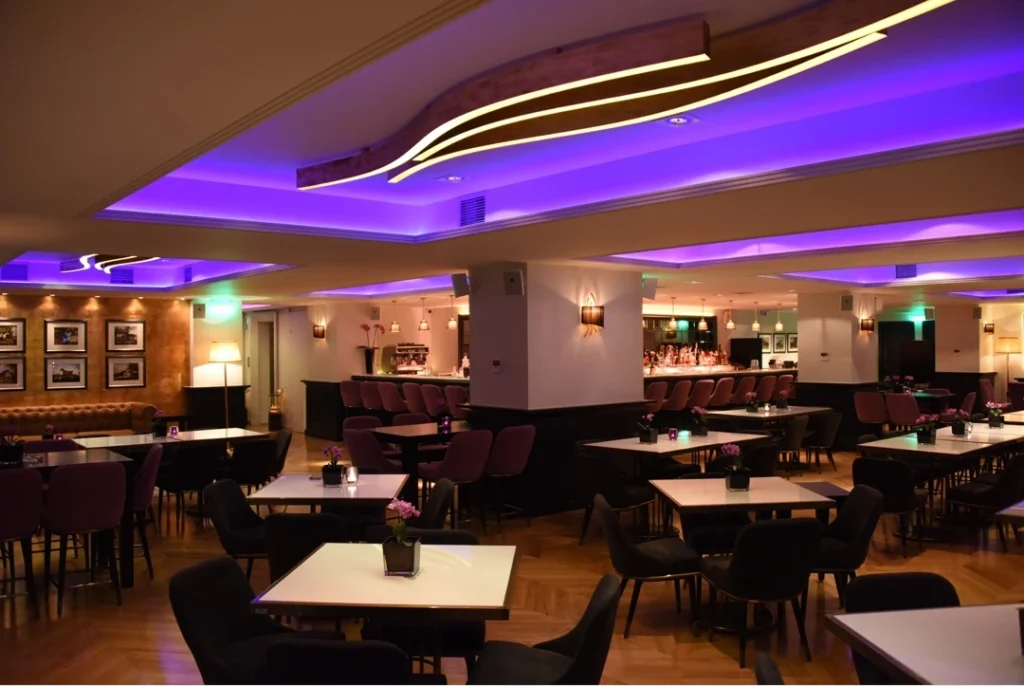
0-10V 디밍
정의
0-10V 디밍은 상업 환경에서 LED 조명을 제어하기 위해 가장 오래되고 가장 널리 채택되는 방법 중 하나입니다. 일반적으로 0V에서 10V 사이의 저전압 신호를 사용하여 밝기를 조절합니다. 10V에서 LED 스트립은 최대 밝기로 작동하고 0V에서는 조명이 최소 수준에 있거나 드라이버 디자인에 따라 완전히 꺼집니다.
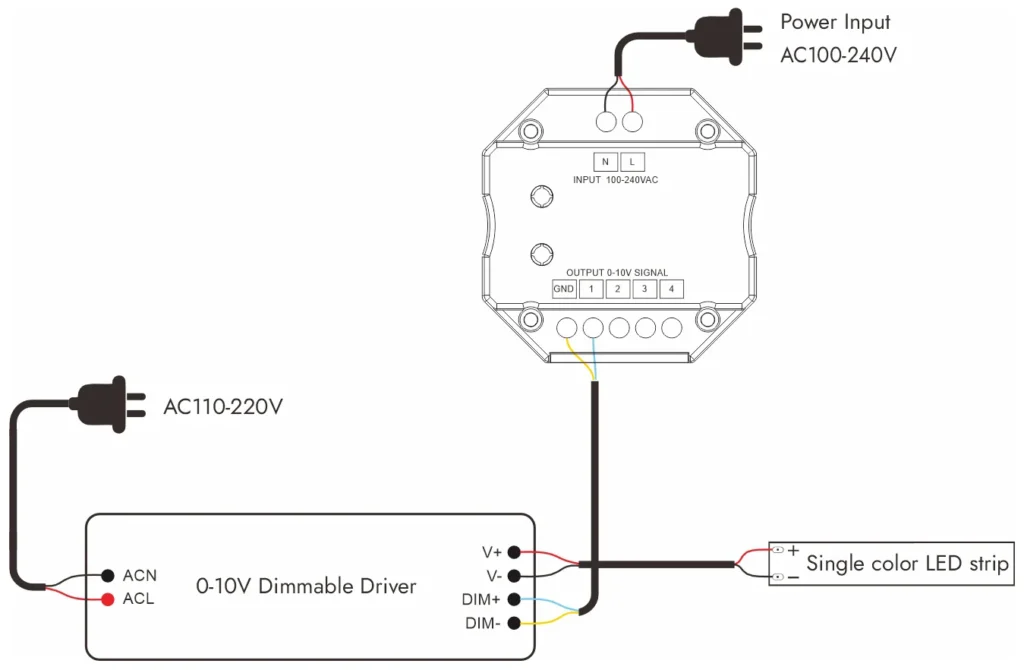
특징
0-10V 디밍의 주요 특징은 신뢰성입니다. 아날로그 시스템이기 때문에 제어 신호는 간단하고 디지털 통신 오류가 발생하지 않습니다. 따라서 까다로운 환경에서 장기적인 성능을 위한 신뢰할 수 있는 솔루션이 됩니다.
또 다른 기능은 확장성입니다. -10V 시스템은 비교적 쉽게 확장할 수 있어 여러 LED 드라이버를 동일한 신호로 제어할 수 있습니다. 이것은 많은 조명기에서 일관된 조명 수준이 필요한 대형 방이나 개방형 공간에서 특히 유용합니다.
그러나 시스템은 주 전원 배선 외에도 제어 신호에 추가 와이어 쌍이 필요합니다. 이것은 신축에서 작은 고려 사항이지만 개조 시나리오에서 복잡성을 추가할 수 있습니다.
장단점
0-10V 디밍의 주요 장점은 안정성, 단순성 및 광범위한 산업 수용입니다. LED 스트립과 잘 작동하는 입증된 기술이며 상업용 건물의 점유 센서 및 일광 수확 시스템과 통합할 수 있습니다.
단점은 0-10V가 DALI와 같은 디지털 프로토콜에 비해 제어 기능이 제한적이라는 것입니다. 동일한 제어 와이어에 연결된 각 고정 장치 그룹이 함께 어두워져 개별 또는 주소 지정 제어가 불가능합니다. 추가 배선의 필요성은 소규모 주거 프로젝트에 덜 매력적입니다.
애플리케이션
0-10V 디밍은 일관되고 안정적인 조명이 우선인 사무실, 학교, 병원 및 산업용 건물에서 매우 인기가 있습니다. 작업 또는 주변 조명을 위해 LED 스트립과 결합된 천장 조명에 자주 사용됩니다. 이러한 설정에서 경제성과 전문가급 제어 사이의 적절한 균형을 제공합니다.
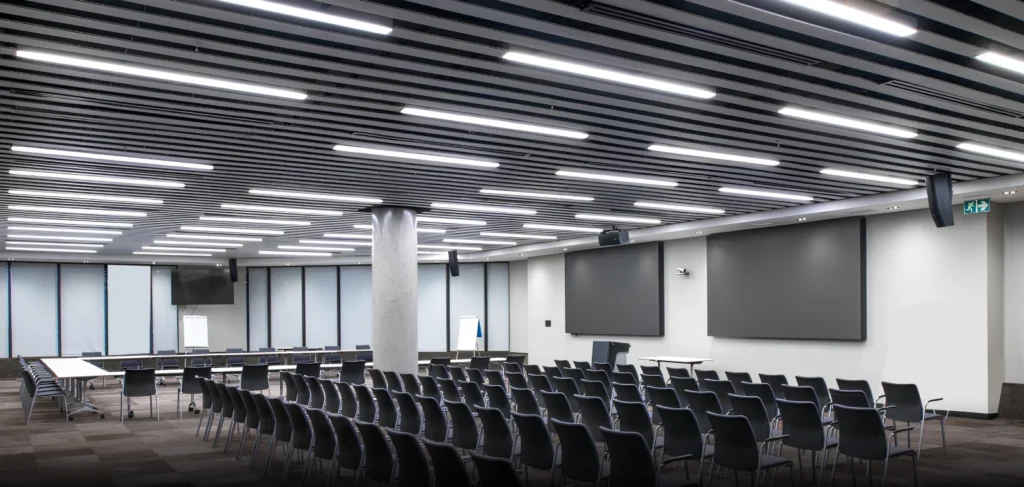
Dali Dimming(디지털 주소 지정 가능한 조명 인터페이스)
정의
디지털 어드레싱 가능한 조명 인터페이스의 줄임말인 달리는 조명 제어를 위해 특별히 개발된 표준화된 디지털 프로토콜입니다. 아날로그 방식과 달리 달리는 고정 장치와 제어 시스템 간의 양방향 통신을 허용합니다. DALI 네트워크에 연결된 각 드라이버 또는 컨트롤러는 개별적으로 처리할 수 있으므로 대규모 LED 스트립 및 기타 고정 장치 그룹을 정확하고 유연하게 제어할 수 있습니다.
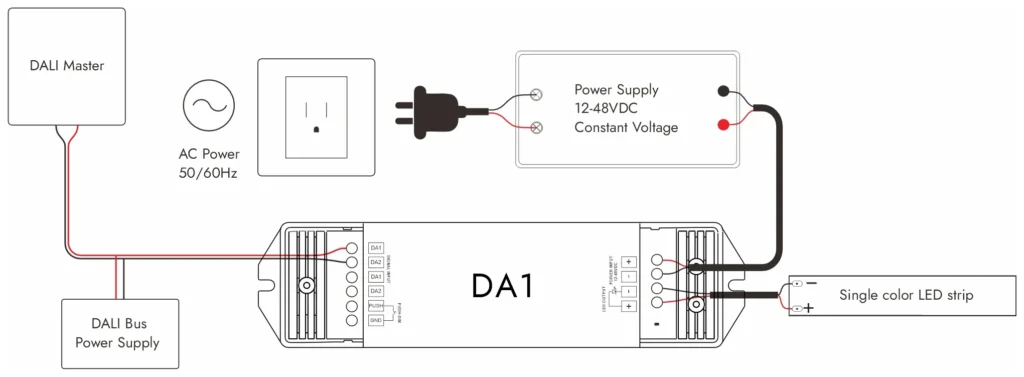
특징
달리의 가장 중요한 특징은 주소 지정 가능성입니다. DALI 버스의 모든 고정 장치는 독립적으로 또는 그룹의 일부로 작동하도록 프로그래밍할 수 있습니다. 이를 통해 조명 디자이너는 공간이 시간이 지남에 따라 조명되고 조정되는 방식에 훨씬 더 큰 자유를 제공합니다.
또 다른 기능은 통합입니다. Dali는 조명이 BMS(Building Management Systems)와 원활하게 작동해야 하는 스마트 건물에서 자주 사용됩니다. 일정 관리, 일광 수확 및 점유 기반 제어를 지원하여 미래에 대비할 수 있는 선택입니다.
Dali는 또한 양방향 통신을 제공합니다. 픽스처는 상태, 전력 소비 또는 오류 정보와 같은 제어 시스템에 피드백을 보낼 수 있습니다. 이는 대규모 설치에 대한 지속적인 모니터링이 필요한 시설 관리자에게 가치를 더합니다.
장단점
DALI의 주요 장점은 유연성, 정밀도 및 확장성입니다. 고급 장면 설정이 가능하며 주요 재배선 없이 쉽게 재프로그래밍할 수 있습니다. 고급 프로젝트의 경우 이러한 수준의 통제가 투자를 정당화할 수 있습니다.
단점은 주로 비용과 복잡성과 관련이 있습니다. DALI 드라이버와 제어 장비는 단순한 솔루션보다 비싸고 설치는 숙련된 직원의 적절한 시운전이 필요합니다. 소규모 프로젝트의 경우 추가 비용이 혜택보다 클 수 있습니다.
애플리케이션
Dali Dimming은 호텔, 오피스 타워, 박물관, 스마트 캠퍼스와 같은 프리미엄 상업 프로젝트에서 널리 사용됩니다. 이러한 환경에서 조명은 기능적일 뿐만 아니라 전반적인 사용자 경험 및 구축 효율성 전략의 일부입니다. Dali에서 제어하는 LED 스트립 조명은 천장, 벽 또는 가구에 매끄럽게 통합되어 미학과 스마트 컨트롤을 모두 제공합니다.

DMX 디밍(디지털 멀티플렉스)
정의
디지털 멀티플렉스의 줄임말인 DMX는 원래 무대와 연극 조명을 위해 개발된 제어 프로토콜입니다. 이후 역동적인 효과와 정밀도가 필수적인 엔터테인먼트 및 건축 조명의 표준이 되었습니다. LED 스트립 조명에서 DMX는 부드러운 색상 혼합과 복잡한 시퀀스를 위해 개별 채널을 제어해야 하는 RGB 및 RGBW 응용 프로그램에 특히 중요합니다.
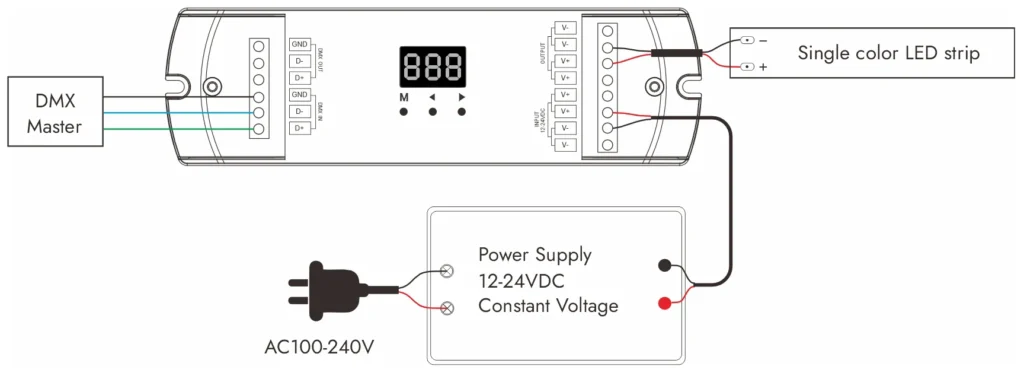
특징
DMX의 특징 중 하나는 정밀도입니다. 이 프로토콜은 채널당 256개의 제어 수준을 제공하여 부드러운 디밍과 정확한 색상 변경을 변환합니다. 극적인 조명 효과에 의존하는 프로젝트의 경우 이 수준의 세부 사항이 중요합니다.
또 다른 기능은 다용도입니다. 단일 DMX 컨트롤러는 수백 개의 채널을 관리할 수 있으므로 디자이너는 대형 정면, 스테이지 또는 이벤트 공간에서 동기화된 조명을 만들 수 있습니다. 각 LED 스트립 또는 드라이버를 특정 주소에 할당할 수 있으므로 고도로 사용자 정의된 디자인을 만들 수 있습니다.
DMX는 동적 프로그래밍도 지원합니다. 특수 소프트웨어 또는 제어 콘솔을 사용하면 조명 장면을 미리 설정하고 실시간으로 트리거할 수 있으며 종종 음악, 비디오 또는 라이브 공연과 동기화됩니다.
장단점
DMX의 가장 큰 장점은 창조적 잠재력입니다. 부드러운 페이드부터 스트로브, 추격 또는 전체 스펙트럼 색상 쇼에 이르기까지 끝없는 효과의 문을 엽니다. 돋보이는 엔터테인먼트 장소나 건축 프로젝트의 경우 DMX는 타의 추종을 불허하는 가능성을 제공합니다.
단점은 복잡성입니다. DMX는 신중한 계획, 전용 케이블 연결 및 전문적인 설정이 필요합니다. 강력하지만 단순한 흰색 LED 스트립 응용 프로그램이나 소규모 프로젝트에는 과도합니다. 또한 컨트롤러와 소프트웨어가 적절하게 프로그래밍되어야 하기 때문에 시스템은 또한 지속적인 전문 지식을 요구합니다.
애플리케이션
DMX 디밍은 역동적인 컨트롤이 필수적인 극장, 클럽, 테마파크, 라이브 이벤트를 위한 선택입니다. 또한, 건물 외관, 다리 및 공공 랜드 랜드 랜드 마크와 같은 건축 조명에 점점 더 많이 사용되어 다채로운 효과가 시각적 아이덴티티를 향상시킵니다. LED 스트립 조명의 경우 DMX는 생생하고 프로그래밍 가능한 효과가 필요한 RGB/RGBW 프로젝트에 가장 자주 선택됩니다.

프로젝트에 적합한 디밍 옵션을 선택하는 방법
LED 스트립 조명을 위한 디밍 방법을 선택할 때 "모두가 맞지 않는" 솔루션은 없습니다. 올바른 선택은 프로젝트의 규모, 예산, 시스템 호환성 및 설계 목표에 따라 다릅니다. 다음은 결정에 도움이 되는 실용적인 가이드입니다.
1. 기본 상업용 또는 사무실 조명용 – 0-10V
프로젝트가 고급 프로그래밍이 필요하지 않은 비교적 간단하고 0-10V 디밍은 비용 효율적이고 안정적인 선택을 제공합니다. 특히 사무실, 창고 및 부드러운 디밍이 충분한 범용 상업 지역에 적합합니다.
2 . 스마트 빌딩 프로젝트의 경우 – 달리
프로젝트가 중앙 집중식 제어, 장면 설정 및 향후 확장성을 요구하는 경우 DALI가 전문 솔루션입니다. 건물 관리 시스템(BMS)과 원활하게 통합되며 대형 사무실, 병원, 학교 및 고급 상업 공간에 적합합니다.
3. 주거 및 장식용 조명용 – 트라이악
특히 가정, 레스토랑 또는 소매점에서 기존 벽 조광기와 호환성을 원한다면 Triac Dimming이 가장 편리한 선택입니다. 추가 배선을 피하고 따뜻하고 아늑한 조명 분위기와 잘 어울립니다.
4. 고정 장치 수준에서 원활한 제어가 필요한 프로젝트의 경우 – PWM
PWM 디밍은 정확한 밝기와 색상 일관성이 중요한 LED 스트립에 이상적입니다. 장식 조명, 액센트 조명 및 깜박임 없는 성능이 필요한 프로젝트에 널리 사용됩니다.
5. 엔터테인먼트 및 건축 프로젝트용 – DMX
다이나믹한 효과, 생생한 색상 변경 또는 음악 또는 비디오와 동기화된 조명이 필요한 경우 DMX가 최고의 승자입니다. 시각적 영향이 중요한 극장, 클럽, 랜드마크 또는 대형 외관에 가장 적합합니다.
최종 생각
올바른 디밍 프로토콜을 선택하면 단순성과 유연성의 균형을 맞출 수 있습니다. 소규모 프로젝트에는 0-10V 또는 TRIAC과 같은 쉬운 솔루션이 제공되며, 크고 복잡한 시스템에는 종종 DALI 또는 DMX가 필요합니다. 광 품질이 중요한 응용 분야의 경우 PWM은 여전히 신뢰할 수 있는 선택입니다.

SignLiteled에서는 Tridonic, EuChips, Sunricher 및 Lifud와 같은 신뢰할 수 있는 브랜드와 협력하여 모든 범위의 디밍 가능 LED 스트립과 호환 드라이버를 제공합니다. 기본 설정이 필요하든 전문적인 스마트 조명 시스템이 필요하든 당사 팀이 최상의 솔루션을 찾는 데 도움을 드릴 수 있습니다.
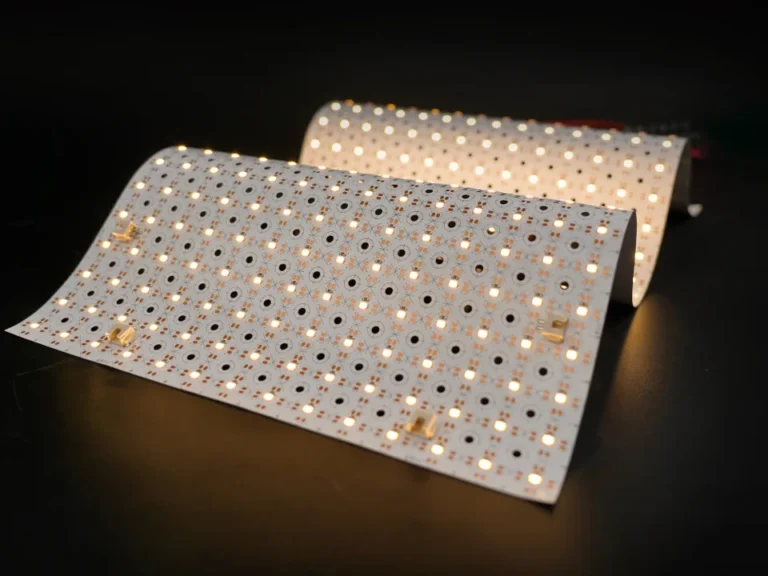

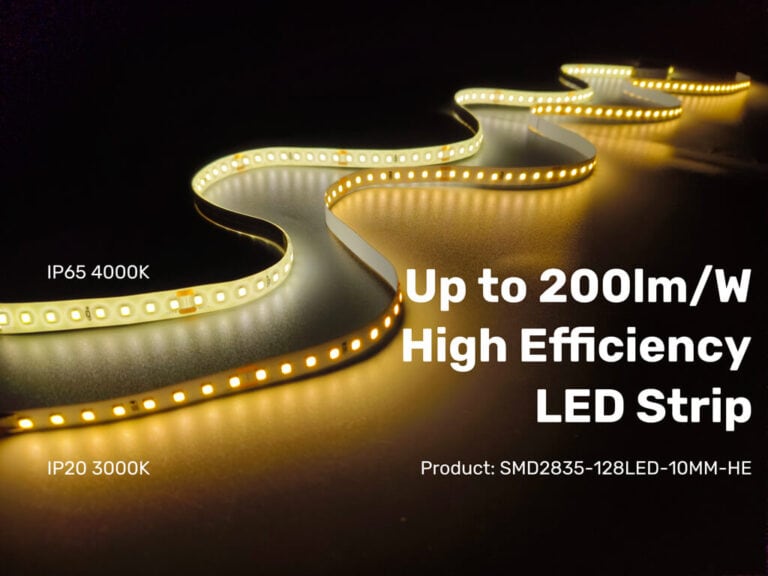
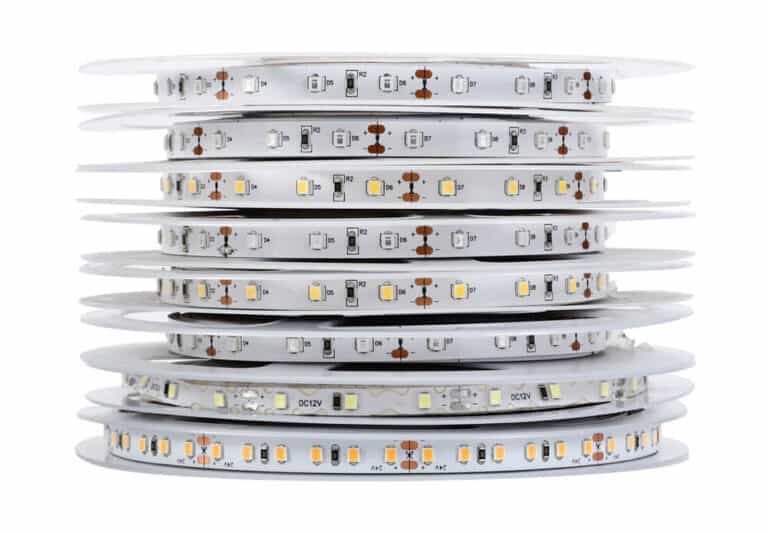

내 동생은 내가 이 웹사이트를 좋아할 수 있다고 제안했습니다. 그는 이 게시물이 실제로 내 하루를 만들었습니다. 이 정보를 위해 내가 얼마나 많은 시간을 보냈는지 상상할 수 없습니다. 감사합니다.
멋진 웹 사이트 여기에 많은 유용한 정보가 있습니다. 몇 명의 친구에게 보내고 추가로 맛있고 분명히 당신의 노력 덕분에 공유합니다.